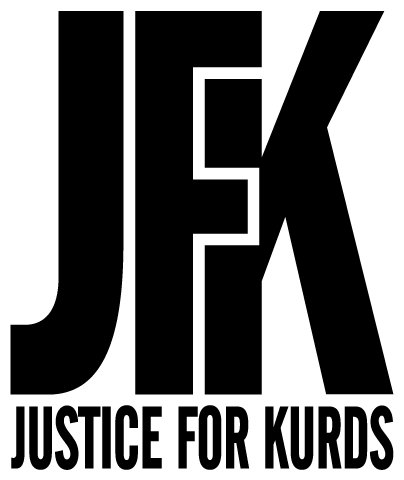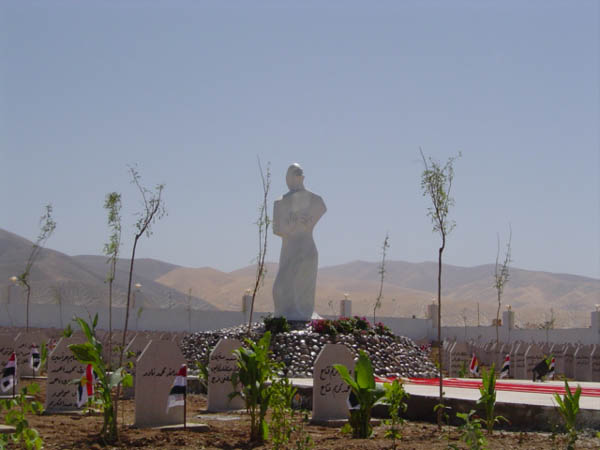ERBIL, Iraq – Images of tiny bodies foaming at the mouth and gasping for air following the suspected chemical attack in Douma, Syria, has brought back haunting memories for many across the border in Iraqi-Kurdistan.
Nearly 30 years ago, it was the Kurds who were the first victims of a horrific chemical bombardment by their own government – the Ba’ath Party-led regime of Saddam Hussein.
“What I saw last night was exactly what happened to us,” said Luqman Abdulqadir, head of the Halabja Chemical Attack Victims Group and Deputy of the Halabja Memorial Monument. “I felt what they felt, watching loved ones die, and knowing that those who survive will feel the pain until the day they do die.”
Abdulqadir was a 20-year-old newlywed on March 16, 1988, spending the day with family when the unthinkable happened: A chemical attack that left his wife, two sisters, two brothers and mother gasping on the ground, unable to speak. And then they were gone.
“We believed we would be the last victims of a chemical weapon. Back then, there was no technology and social media to raise our voice,” Abdulqadir lamented. “But now, it is still happening. The world knows and yet there is silence.”
The Syrian bombardment over the weekend shook Halabja survivors, prompting a small group – including Abdulqadir – to gather Monday at the Halabja Monument and Peace Museum, a quiet place of reflection at the foothills of the Iranian mountainside, to express their solidarity.
They held signs and read a short but potent message xpressing that their pain has again been renewed, and that the use of such banned gasses cannot be tolerated. “What happened in Syria makes us feel scared, like this could happen to us again,” Abdulqadir told Fox News after the gathering. “It is time for the U.S. to come in and take real action.”
The chemical concoction believed to be used in Halabja – VX, sarin, tabun and mustard gas – also brought about the eerie side effect of some victims laughing uncontrollably, even as they took their last breaths.
At least 5,000 Kurds are believed to have perished in the attack, while tens of thousands more from the 80,000-person city continue to battle both visible and unseen scars from post-traumatic stress to birth defects to respiratory problems to sharply elevated cancer rates.
“Life stops in a place where chemical weapons are dropped,” said Abdulqadir. “The trees are still dying here.”
Hameda Hasan, 48, still suffers respiratory and hearing problems, and has had multiple surgeries in Europe on her singed skin. But it’s reliving the details of the attack that haunts the most.
“When I heard about Syria, I felt like it happened to me again,” she said. “I felt my skin bubble. I felt the pain.”
Hasan was 16 the day of the attack, and getting ready to sit for lunch on what was a bright and sunny day. But she said she knew something wasn’t right, even before the attack. Iranian military forces had entered the city three days before – this was the waning days of a protracted Iran-Iraq war – and an uneasy calm had swept over the city. But the Iranian entry was Saddam’s pretext to launch an attack.
Warplanes suddenly appeared from the skies, directly striking Hasan’s family home. She said confusion ensued as strange smells permeated the air. A bird with broken wings flopped down, and their cow in the backyard started to cower, as its eyes streamed. They all started to violently vomit.
“We got in a car and tried to run away to another neighborhood. There were bodies everywhere, every corner,” Hasan continued. “Cars has no choice but to just drive over the dead bodies. Then five new planes came.”
The family made it to relative safety in Iran, but nine of her family members perished. Hasan herself remained unconscious for 15 days.
Fellow Halabja resident Gashaw Murad Mohammed, now 42, could not even bring herself to look at the images flooding the media from the attacks in Syria. She recalled hiding in the basement in the aftermath of the Halabja attack, before her father thrust her and her four younger brothers – ages eight, four, two and six months – into a neighbor’s car and promising they would be “just behind.” She remembers trying to cover her brother’s noses, their eyes swelling and they struggled to breathe.
She remembers crossing over the Iranian border on foot with her baby brother strapped to her back. Weeks passed, and Mohammed waded through the sea of refugees looking for the rest of her family.
“Finally a relative came and said to stop waiting for them. He said my parents were dead, my little sister was dead, that 21 persons from my family were all burned and dead,” Mohammed recalled. “I was just 12, and left alone to raise my little brothers.”
Two brothers went on to become top physicians, while two others became prominent teachers. And although Mohammed herself had to leave school to bring up her siblings in the sixth grade, in 2011 she went back to finish her studies and earn a degree in computer science. It was her own seemingly small but deeply symbolic victory.
As for the search for justice for the survivors and victims of Halabja, an Iraqi Special Tribunal did not charge Saddam Hussein for crimes against humanity in connection to the attacks. His cousin, Ali Hassan al-Majid, who commanded Iraqi forces in the country’s north at that time and was infamously known as “Chemical Ali,” was tried and finally executed in 2010 or his role in organizing the massacre.
Today, down the road from a somber monument to the massacres lies a mass gravesite, where the names of the victims are etched across the thousands of headstones. There is no welcome sign, just one chilling reminder:
“Baath’s Members are not allowed to enter.”
—
Hollie McKay has been a FoxNews.com staff reporter since 2007. She has reported extensively from the Middle East on the rise and fall of terrorist groups such as ISIS in Iraq.

